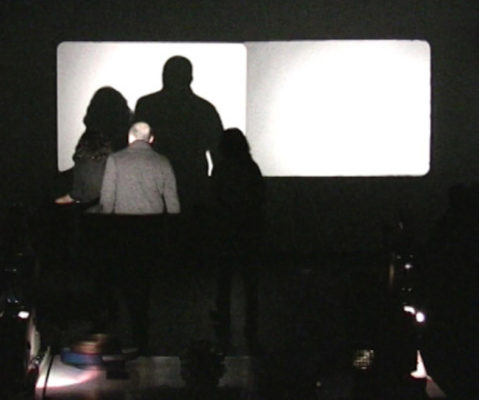Search
To search for an exact match, type the word or phrase you want in quotation marks.
A*DESK has been offering since 2002 contents about criticism and contemporary art. A*DESK has become consolidated thanks to all those who have believed in the project, all those who have followed us, debating, participating and collaborating. Many people have collaborated with A*DESK, and continue to do so. Their efforts, knowledge and belief in the project are what make it grow internationally. At A*DESK we have also generated work for over one hundred professionals in culture, from small collaborations with reviews and classes, to more prolonged and intense collaborations.
At A*DESK we believe in the need for free and universal access to culture and knowledge. We want to carry on being independent, remaining open to more ideas and opinions. If you believe in A*DESK, we need your backing to be able to continue. You can now participate in the project by supporting it. You can choose how much you want to contribute to the project.
You can decide how much you want to bring to the project.

A small map of audiovisuals and cinema in the art institution.
In her well-known essay Against interpretation (1964), Susan Sontag referred to the fact that films had still not “been overrun by interpreters”, due simply to the newness of cinema as an art. She added this was also owed “to the happy accident that films for such a long time were just movies; in other words, that they were understood to be part of mass, as opposed to high, culture and were left alone by most people with minds”. It’s more than evident that this relation today has been reversed, for, along with a legion of interpreters, there is no museum, art institution or art centre that hasn’t incorporated film as an integral part of its programme. This calls for some prior periodization.
If the decades of the seventies and eighties were key for the emergence of video, and video art as a new artistic medium that called for its own insertion within institutional channels and programmes, the nineties was the decade in which film made its definitive entrée into the art institution. More recently, the fusion of these media has become normalised, with the erasure of any limits or frontiers between them (aided and abetted by the digitalisation of all technology). My own writing in the last lustrum has experienced this dissolution between art and cinema, and it has occurred naturally.
Independently of the medium, the audio-visualization of contemporary art is consubstantial with becoming the screen in all ambits of private and public life. The integration of video and cinema into the art institution has run parallel to the consecration of artists and the market’s assimilation of all of this. But more than the technology itself (video, film, TV, installations, etc.) and its corresponding technological equipment, what the art-institution has slowly and stealthily integrated are the conceptual and discursive devices that surround the technological medium.
In this way the current trend for many artists to choose obsolete technologies like celluloid is a critical and logical response to the massive digitalisation of society, and on occasions it attains the nostalgic touch of a technique in disappearance. The imitation of the analogical through the digital is at present a dominant trend. An interesting (technical and temporal) paradox arises if one compares the difficulties many institutions and art centres have encountered in recent times, when incorporating 16 and 35 mm loop projectors, an artisanal technology that has recently fallen out of date, with the predicament an artist faced to negotiate the screening of a VHS tape, let’s say in 1989. What was then new is now antiquated and out of date, while what was at that time old is now new. Another difference, that has dissolved, is the consideration of cinema as a more elevated art and video as pertaining to an inferior class.
Fortunately in the sphere of art, this technological ambivalence between video and film was sutured in the nineties, as very much a “Douglas” matter; Stan Douglas and Douglas Gordon. Though to do justice here one should remember that Godard, Marker, Kluge and other co-religionists of tv-politics had already abandoned any type of compartmentalization as passé. But in the strictly artistic ambit, what is owed to the “Douglas” (along with other artists of the period) is the introduction of film as new content for contemporary art that cannibalises everything in its path. Hitchcock, Pasolini and Antonioni as content; while regarding the form, the attention of many artists centres on remakes, versions, sound tracks, credits and other aspects of cinema. In this combinatory process, the process of “adjustment”, between the spatial-temporal dynamics of the cinematic device and those specific to exhibiting, results productive.
In her essay, Sontag commented that unlike the novel (and here we could add the exhibition), film possesses a vocabulary of forms, a filmic syntax: “the explicit, complex and discussable technology of camera movements, cutting and composition of the frame that goes into the making of a film”. This formal part is applicable to the whole mechanism so that cinema in its entirety becomes a model of production. This is something some French artists (Parreno, Huyghe, Gonzalez-Foerster) endeavoured to carry out in the nineties, stretching the analogy of the exhibition as space-time in a manner similar to cinema, or the always seductive idea of the exhibition as a film in real time, etc. Many of the exhibitions of Dora García share this filmic impression in 3D. Once again, it is artistic practices that expand the space within the art institution and not the other way round. Cinema is principally a spatial art, and as such, its dematerialization in artistic practices is a consequence of its spatialization. The deconstruction, dismantling, and later ad hoc assemblage of the filmic “apparatus”, is therefore the solution to this spatialization. Audio-visualization as a spatial solution (the black cube versus white cube) is also a question of an architectural nature.
From all this has emerged with force a genre in its own right, the “exhibition film”. An audio-visual with a dual entry, depending on whether the first screening takes place as art or cinema. This audio-visual equally combines genres and renders useless the rigid divisions between documentary and fiction. In the Spanish context its practitioners are multiple and varied, and this spatialization is where the films of Laida Lertxundi, the videos of Alex Reynolds, and Esperanza Collado’s texts and experiments with the filmic apparatus, to mention just a few authors, concur. The exhibition El cine rev(b)elado at the CA2M in Móstoles last year, curated by Playtime Audiovisuales and Abraham Rivera was the response to this scenario of confluence. From the cinema to the white cube, there are countless examples: from the commercial release of Tiro en la cabeza (2008) by Jaime Rosales coinciding with its projection in the form of a video installation in the Museo Reina Sofía in Madrid; to Isaki Lacuesta’s incursions into the white cube; the exhibition Miradas al límite at the ARTIUM museum in Vitoria-Gasteiz in 2008; the phenomenon of the Galician Novo Cinema; or the programmes such as the one developed by Víctor Iriarte (himself a creator of audio-visuals and performance) in the Tabakalera of San Sebastián, or the programming of cycles of filmmakers at the Bilboarte centre.
Amidst the progressive diversification of the functions an art institution can take on (exhibitions, publications, education, library, etc) the new audio-visual one opens up the possibility for the figure of a programmer, as well as the consideration of this “programme” as an outstanding element of the cultural services provided. The cultural industry diversifies, stratifies, separates and agglutinates. The current and growing insertion of the so-called “invisible film” or “odd film” in channels that have nothing to do with the independent raises the question of how long it takes for the system to absorb anything that results unusual, different, polemical or simply marginal. To institutionalise also supposes making something habitual, current and logical, but not necessarily to subject it to the norm and the rule.

Peio Aguirre writes about art, film, music, theory, architecture and politics, amongst other subjects. The genres he works in are the essay and meta-commentary, a hybrid space that fuses disciplines on a higher level of interpretation. He also (occasionally) curates and performs other tasks. He writes on the blog “Crítica y metacomentario” (Criticism and metacommentary).
"A desk is a dangerous place from which to watch the world" (John Le Carré)